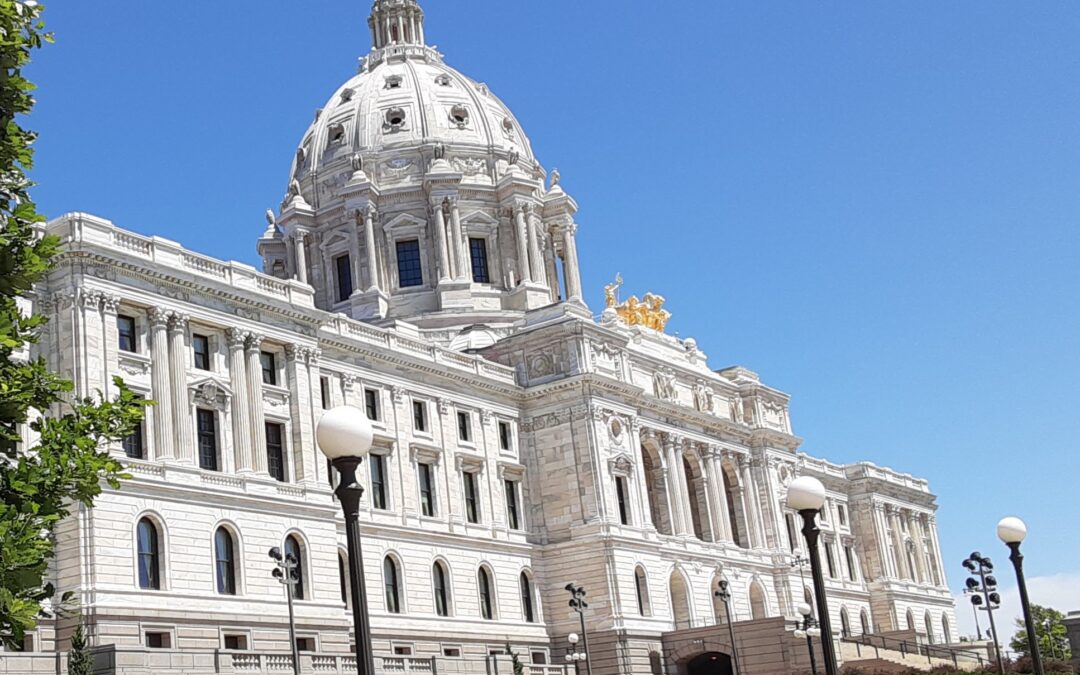Today, the state’s Department of Management and Budget (MMB) released its latest budget forecast. The news was not good. But before we dig deep into the horrific numbers, some background is in order.
As my colleague Bill Walsh pointed out earlier, this entire exercise is largely pointless. Nothing will happen of significance at the legislature on the state budget-setting front until the “real” forecast comes out in late February.
Minnesota budgets on a two-year (biennial) cycle, with the current cycle ending in June 2025. So, when the legislature convenes in mid-January, it will start work on the fiscal year 2026-27 budget cycle, which will take effect commencing July 2025.
The budget forecast looks beyond to the fiscal year 2028-29 cycle. Long story short, the further out you go, the worse the forecast looks.
In the latest forecast update (p. 7), the projected near-term budget surplus fell by almost two-thirds, from a surplus of $1.7 billion to a surplus of $616 million.
The change was driven by a combination of forecast revenue reductions and estimated spending increases. The largest single item is a more than $1 billion drop in an item labeled “non-tax revenue.” As MMB describes it (p. 9),
The reduced non-tax revenue forecast is largely due to lower projected investment income resulting from lower projected interest rates and falling general fund cash balances in the next biennium.
In other words, income (interest) earned on the budget surplus will be smaller because there will be less of it. Translation: like the mythical Ouroborus, the budget surplus is eating itself. And it will get worse.
As the graphic on p. 10 shows, the modest $600 million surplus for 26-27 swings to a $5.1 billion deficit (euphemistically called a “structural imbalance”) for fiscal years 2028-29. This figure includes the expected effects of future inflation. Excluding the earlier surplus, the stand-alone 28-29 budget is expected to produce a $5.7 billion deficit (p. 11).
As the table on p. 11 shows, expected future spending is the biggest culprit, growing much faster than expected future revenue.
But there will be no deficit: state budgets must balance from period-to-period.
MMB’s latest report runs some 106 pages. One item I will call attention to:
Under E-12 education, the fastest growing category is “nutrition programs,” growing more than 9 percent from budget period to period. “Free food” for kids has never been more expensive. Costs continue to skyrocket within the current period, as explained by the MMB (p. 69),
Additionally, spending on school lunch and breakfast programs is $32 million (5.8 percent) higher than previous estimates for the FY 2024-25 biennium. This increase is attributable to higher than anticipated FY 2024 meal claims and an increase in the assumption for growth of the number of meals served for FY 2025, FY 2026, and FY 2027
The original estimates for the “free” school lunch program turned out to be laughably off the mark. The program was designed to feed “all” public school children. The number of school children is not increasing. “Higher than anticipated meal claims” sounds more like Feeding Our Future than merely bad budgeting.
In fact, the number of school children is expected to continue falling, as explained by MMB (p. 70).
By law, the Governor must submit his proposed two-year budget before the end of January.

